German Great Artist - Hans Holbein Painting Gallery
Posted by
Art Of Legend India [dot] Com
On
3:28 AM
The
clarity and precision of Holbein's art make him one of the most powerful
portrait painters of all time. Even his early religious works such as The Meyer
Madonna are characterized by minutely observed realism. This altarpiece is also
typical of Holbein's painting in its cool colours and sharply defined outlines.
Lady
Guildford was one of the first portraits that Holbein painted during his first
visit to England. His most brilliant achievement of this period is the
sensitive portrait of Sir Thomas More. The charmingly informal Unknown Woman
with a Squirrel was also painted during these years.
The
masterpiece of Holbein's second English visit is the stunning double portrait
known as The Ambassadors, painted before Holbein entered royal service. When he
did, his style changed dramatically: Henry VIII and Queen Jane Seymour are
hieratic images set against plain backgrounds. A similarly bold simplicity of
design also distinguishes Christina of Denmark and Unknown Lady.
Jakob
Meyer probably commissioned this altarpiece in the year his two sons (who
appear with him to the left of the Madonna) died in childhood. Kneeling
opposite are Meyer's daughter Anna, his wife Dorothea and his dead first wife
Magdalen Baer (shown behind Dorothea). Holbein's mistress Magdalena Offenburg
probably posed for the Virgin. The painting has both German and Italian
features: the cool realism and linear precision are in the German tradition,
while the symmetrical 'Madonna of Mercy' composition, the classical motifs and
the softened features of the Madonna t originate from Italian Renaissance t
painting.
This is
a companion portrait to Sir Henry Guildford. The date of the painting and the
sitter's age (she is in her 27th summer, so is either 26 or 27) appear as if
cut in stone above the ornate pillar beside her. This placing of the figure
beside classical architecture is typical of Holbein's early portraits. The
artist has paid meticulous attention to detail, particularly in the dress, but
has created a bold composition, with clear outlines, strong colour contrasts
and an impressive sense of bulk. A preparatory drawing exists which shows Lady
Guildford smiling, with a vivacious sideways glance.
This superb portrait of Holbein`s
friend, host and patron shows More in his late 4os, wearing the ‘Ss’ collar that
signified his position as Lord Chancellor accurate in detail, the composition has
a monumentality and simple grandeur appropriate to the sitter’s status and
strength of character.
This lady was probably painted during Holbein's first visit to
England: she is shown in the same half-length, three-quarter view as Sir Thomas
More, while the twisting foliage is similar to that behind Lady Guildford. The
painting's charm derives mainly from the bird, and the little pet squirrel
which sits on her arm.
This magnificent, life-size double portrait shows Jean de
Dinteville, a French aristocrat and ambassador to London and his friend and
fellow-diplomat Georges de Selve, the young bishop of Lavour. The two men stand
either side of a 'whatnot' on which lies an immaculately painted still-life
display which symbolizes their intellectual and spiritual accomplishments. At
first the painting appears to be a glorification of man's achievements, but it
takes on another meaning when the distorted object which hangs between their
feet is recognized as a skull. One of the several references to death in the
painting, it makes the portrait a momenta mori (a reminder of death): its
message is that despite man's wordly achievements, we all must die.
The
only portrait from life of the king that is undoubtedly by Holbein, this
picture may have formed a pair with a portrait of Henry's third queen, Jane
Seymour. In this icon-like image, the body is flattened up against the picture
plane, and the emphasis is on decoration: the gold thread, chain and buttons
are painted in real gold.
This
timid-looking ex-lady-in-waiting had only become queen in the year that this
portrait was begun. The next year, size fulfilled Henry's dream by bearing him an
on (Edward VI), hut died in childbirth. Like the king, she is set against a
plain blue background wink her dress is painted in exquisite and precise
detail.
A
prospective bride for the king, following Jane Seymour's death, the widowed
duchess sat for Holbein in Brussels on the afternoon of 12 March 1538, when the
artist drew her likeness in a three-hour sitting. In this impressive full-length
portrait, the young woman's fresh and delicate beauty is highlighted by her
austere mourning clothes.
This
young woman used to be identified as Henry's fifth queen, Catherine Howard, but
she was probably a member of the Cromwell family. Like the Duchess of Milan,
she is placed against a plain greenish background, on which she throws a
shadow. The gold inscription indicating her age echoes the gold details of her
dress.
Writer – Marshall
Cavendish
Subscribe to:
Post Comments (Atom)

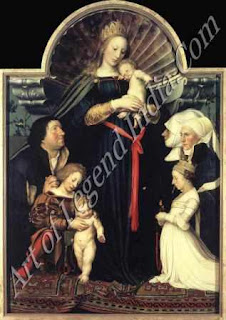
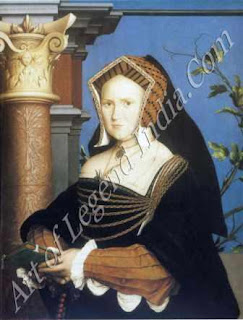
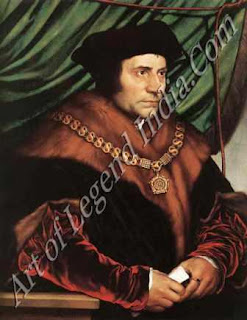
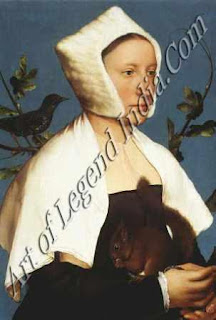
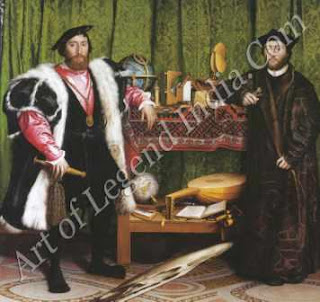
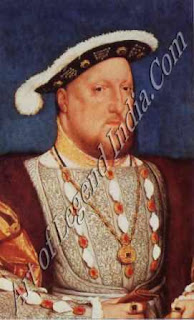
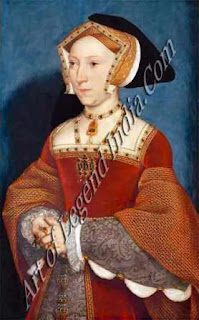
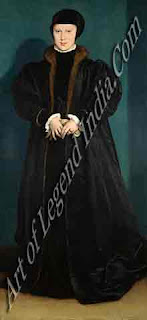
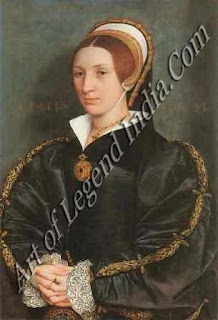










0 Response to "German Great Artist - Hans Holbein Painting Gallery"
Post a Comment